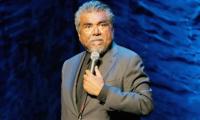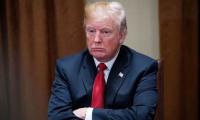Prime Minister Nawaz Sharif repeated his optimism in the CPEC’s potential at the CPEC Summit and Expo in Islamabad. He said the multiple projects grouped under the CPEC banner would add 30,000MW of energy over the next 10 years and bring development to Balochistan, Gilgit-Baltistan and the western belt of Khyber Pakhtunkhwa, all of which were previously neglected. The boldest prediction is that Pakistan will gain a central position in world trade and that our underdevelopment problem will be solved. Unity is the message from the federal government when smaller provinces raise concerns and Finance Minister Ishaq Dar took to the same podium to call for unity on the project. The trouble, however, is that every time the government holds a meet on the CPEC, its failure to deliver on earlier promises is highlighted. Words offer little consolation as none of the early harvest projects for the CPEC are set to be completed in the regions raising the most concerns. Without denying the obvious benefits that can be accrued from the corridor, the country is hardly united behind it and perhaps this is what weighed on Dar’s mind when called for political and provincial unity over the CPEC. Balochistan, in particular, feels this is yet another attempt by the centre to exploit its abundant natural resources without including the province in the riches. KP has joined Balochistan in protesting changes in the CPEC route, which they claim, added cities in Punjab and Sindh at their expense. The government response has been that work had to start there because these places had the necessary infrastructure. But that only reveals a contradiction in the CPEC which will be difficult to resolve: areas which do not have the infrastructure for hosting mega projects cannot develop until money is first spent to create the conditions to allow for that development.
That said, the government spelled out in much greater detail what the projected goals for the corridor are. The government has told us that the Chinese believe in inclusive regional development. The CPEC certainly offers Pakistan the possibility of becoming a global trade hub. If it possesses one of the best developed road, rail and shipping networks in the region, the country could be able to attract industry and investment. With the bulk of the corridor expected to be ready and operational by 2025, the future might be promising. The strong commitment to energy projects by the Chinese is another positive, which takes away the focus from building roads to putting the economy on track. The CPEC certainly offers to improve Pakistan’s connectivity to the world – but key challenges remain. Concerns will have to be resolved by action, not talk. Chinese concerns over security and global interference will require both making meaning headways in the war against terrorism and convincing all the people of Pakistan that the CPEC is in their benefit. Chinese experts too raised the issue of security at the summit. On another note, many commentators and analysts have found it difficult to know the worth of CPEC deals since they were handed out in a closed bidding process. The government claimed this secrecy was essential to secure Chinese investment but a little more transparency would go a long way to providing assurances that the CPEC will be, as Nawaz said at the expo, not just a game-changer but a fate-changer. The CPEC summit was a show of strength and commitment from the government to the Chinese and the people of Pakistan. The same commitment will be needed to ensure that the promises of equitable development are fulfilled.
Every year, millions of girls silently say goodbye to their education and the promise of a better career and get married
Ruling party emerged victorious in by-elections and as per unofficial results has won at least two out of five NA...
According to its organizers, the event now brings together around one billion people across 200 countries every April...
Pakistan’s nuclear programme, it would have threatened peace in the region because of its hegemonic designs
PHF should take comprehensive steps aimed at bringing improvement in the quality of our players
Since its ascent to power in 2014, the BJP, under the leadership of Indian Prime Minister Narendra Modi







